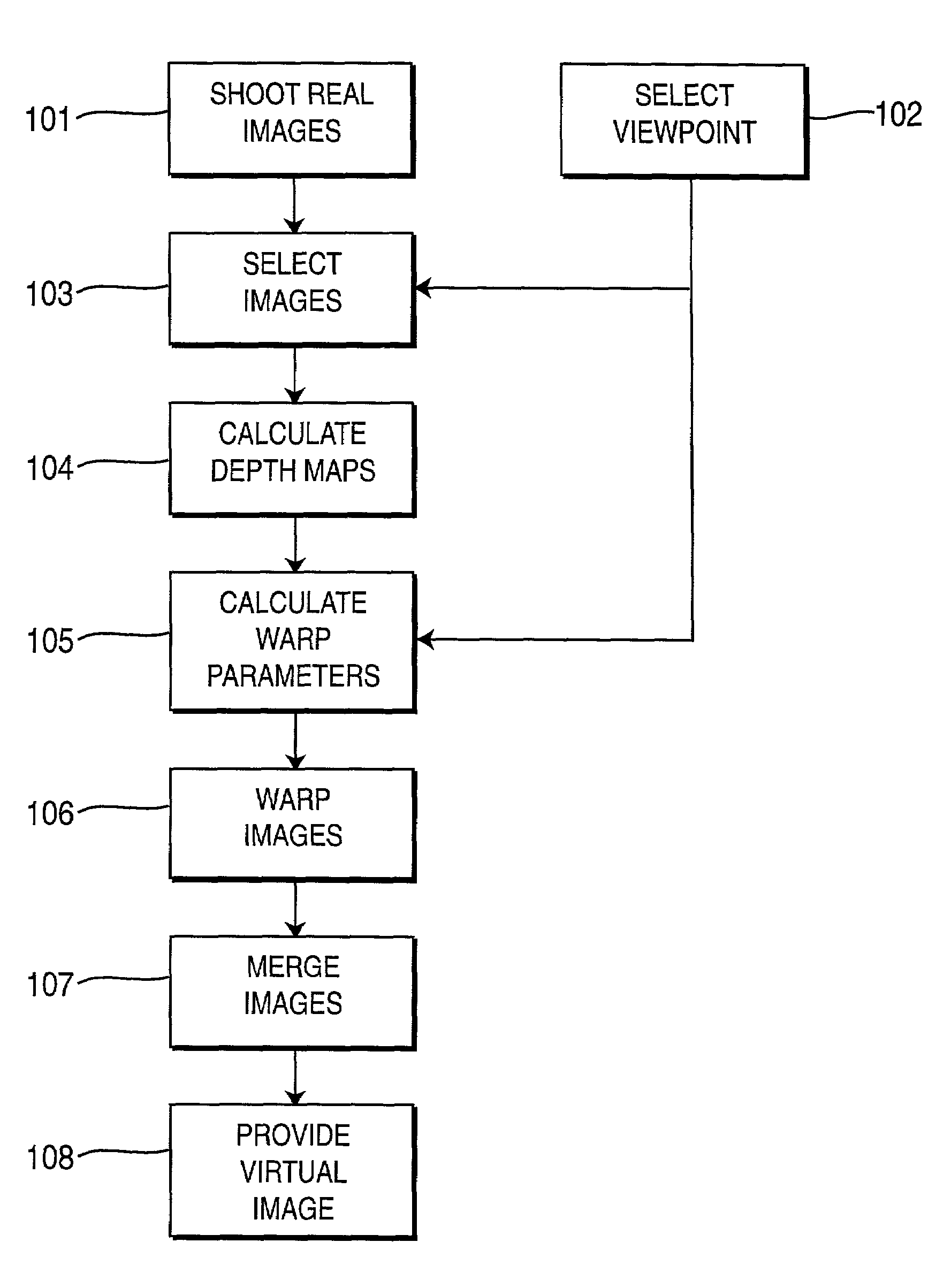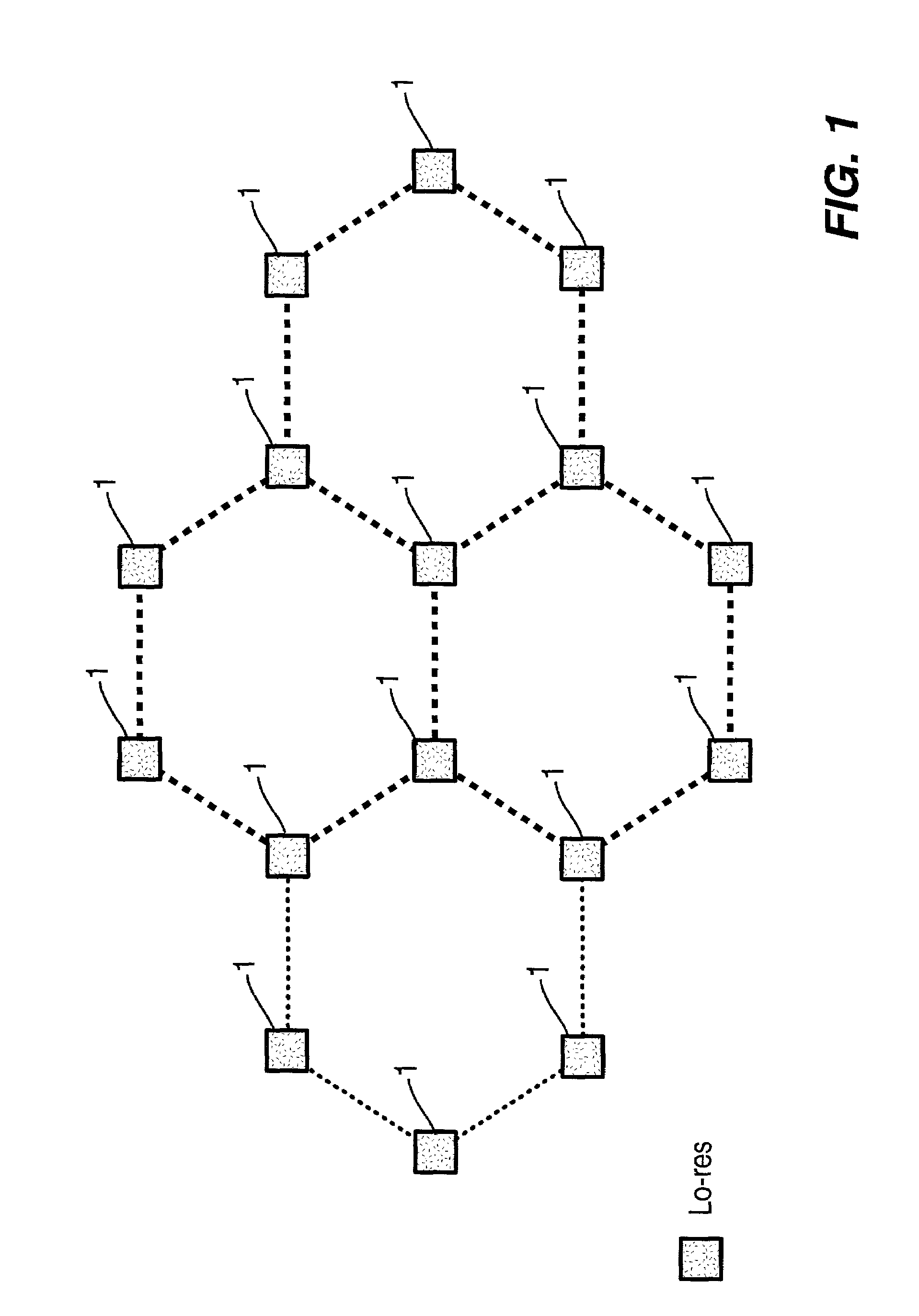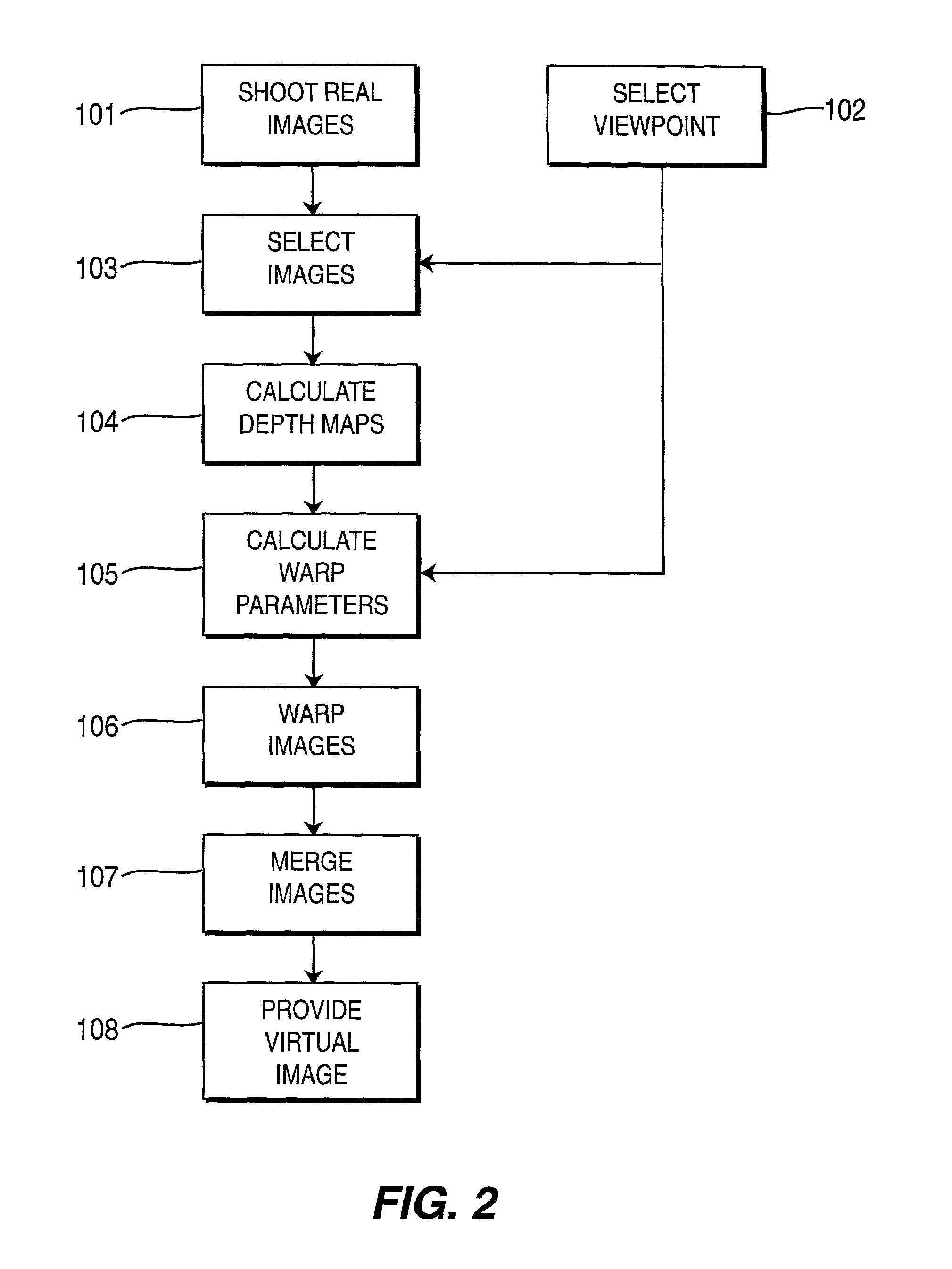Method and apparatus for synthesizing new video and/or still imagery from a collection of real video and/or still imagery
- Summary
- Abstract
- Description
- Claims
- Application Information
AI Technical Summary
Benefits of technology
Problems solved by technology
Method used
Image
Examples
Embodiment Construction
[0033]The present invention overcomes many of the problems of previous approaches to interactive tele-presence. This is accomplished using a new image-based approach. The limitations of tradition optical flow based tweening can largely be overcome by capturing the scene in 3D and then rendering the scene from novel viewpoints. The key issue for real-time implementation of prior art global 3D representations is their requirement for centralized processing of all the views at each time instant. Improved algorithms and camera placement allow the present invention to circumvent these problems and attain a viable interactive tele-presence.
[0034]One important aspect of remote tele-presence is the ability to provide continuously changing viewpoints of the remote environment and, thus, provide a sense of stability and natural movement within the environment. In a practical system the viewpoints cover all the parts of the remote workspace that are relevant for a given application. For exampl...
PUM
 Login to View More
Login to View More Abstract
Description
Claims
Application Information
 Login to View More
Login to View More - R&D
- Intellectual Property
- Life Sciences
- Materials
- Tech Scout
- Unparalleled Data Quality
- Higher Quality Content
- 60% Fewer Hallucinations
Browse by: Latest US Patents, China's latest patents, Technical Efficacy Thesaurus, Application Domain, Technology Topic, Popular Technical Reports.
© 2025 PatSnap. All rights reserved.Legal|Privacy policy|Modern Slavery Act Transparency Statement|Sitemap|About US| Contact US: help@patsnap.com



